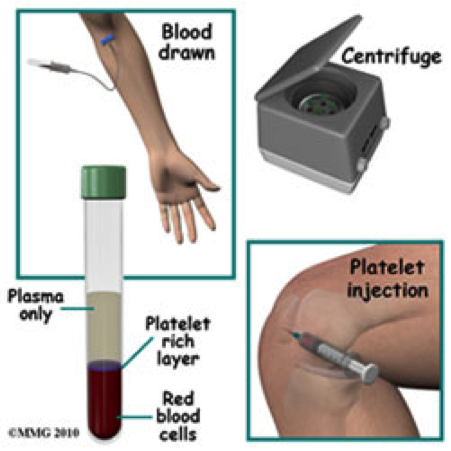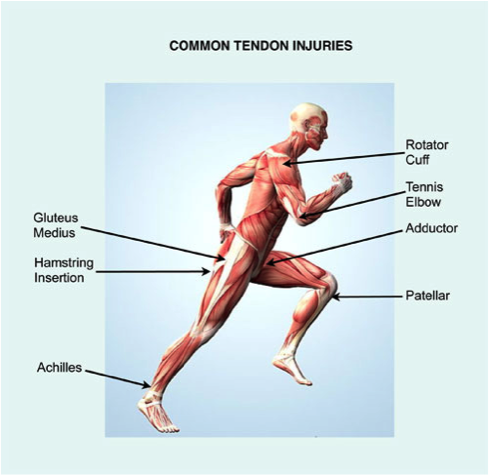Asheville Platelet Rich Plasma (PRP) Therapy
Non-surgical regenerative therapy to reduce pain & heal faster
Platelet rich plasma injections offer an alternative for people with joint or tendon pain who may be considering elective surgery or joint replacement due to injury or arthritis. When performed by an experienced physician, PRP can be a safer alternative to steroid injections and, when successful, provides longer lasting relief.
About Platelet Rich Plasma (PRP) Therapy in Asheville

Blood is composed of red blood cells, white blood cells, plasma, and platelets. Platelets are responsible for blood clotting and healing. When activated at a site of injury in the body, platelets release healing proteins called growth factors and attract cells that contribute to regrowth (stem cells).
Initially, you will be seen in consultation with one of our physicians in order to determine if you are a good candidate for the procedure. This involves reviewing your medical, athletic, and occupational history as it relates to your injury. The injured area will also be examined and possibly imaged with diagnostic ultrasound as that is the imaging modality that will be used when treated with PRP. Any other previous imaging that you have had will also be reviewed. Once the consultation is complete, we will discuss the specifics of the procedure.
**Please bring to the clinic any prior scans (eg. X-rays, ultrasounds, MRI, CT) and reports as these will assist the in assessing your condition.
This procedure is done in the office setting with local anesthesia. The blood is drawn the same day of treatment and approximately 45 minutes is required for the visit. Once the platelet portion of the blood is concentrated and separated, it is injected under ultrasound guidance to the problem area. The patient may experience between 2-5 days of soreness after the treatment and use of anti-inflammatory medications is not advised during treatment. Depending on the problem, multiple treatments may be required.
Studies have shown that PRP may be effective in treating many conditions such as mild-moderate joint arthritis and tendon and ligament injuries. Studies are being published regularly describing the appropriate use and effectiveness of this treatment. Visit our PRP Frequently Asked Questions page to learn more.
See How a PRP Procedure Works
https://www.youtube.com/embed/YK7oHEhAXTs?rel=0
This video provides a detailed look at PRP therapy for an elbow tendon injury.
PRP in Medical Literature
A healthy amount of evidence suggests that PRP therapy offers great promise in musculoskeletal medicine. Laboratory research and clinical studies have investigated its merit in both soft tissue conditions and bone healing. However, an abundance of level 1 data to support the efficacy of PRP therapy is still lacking.
Currently, much of what is guiding the use of PRP in orthopedic medicine is cohort data, conclusions drawn from case studies, and theory generated by in vitro and animal studies. Still, much of that information is undeniably compelling.
For this reason, most insurance companies will not support (read: pay for or “cover”) PRP treatment. Moreover, a standard treatment regimen does not yet exist (i.e. Number of injections required, spacing between injections given in series, rehabilitation protocol during and after a series, etc); however, PRP is being used with regularity at the highest levels of sport and in the most highly compensated athletes in the world today.
Click here for a more comprehensive list of published articles.
Looming Questions about PRP
How can we continue to fine tune the use of platelet rich plasma for musculoskeletal conditions? More studies are needed to determine the following:
- What exactly is the optimum PRP concentration and composition?
- Does a higher platelet concentration equal a better product or is there an inhibitory concentration that may be counterproductive as some have proposed?
- Is a leukocyte-rich or leukocyte-poor PRP more effective or is one better than another for specific conditions?
- What are the specific orthopedic conditions best managed with PRP and what are the proper dose, frequency, and timing of application for those conditions?
- Is endogenous or exogenous activation preferable?
- What is the best process by which to centrifuge whole blood and concentrate platelets?
- What is the most effective delivery medium and how should patients be managed or rehabilitated after treatment?
- What is the most effective post injection rehabilitation program?
Conditions treated with PRP

Shoulder
Rotator Cuff tendon wear and tears
AC & Glenohumeral Joint Arthritis
Bicep Tendinosis
Labral tear
Elbow
Lateral/Medial Epicondylitis (Tennis/Golfers Elbow)
Ulnar Collateral Ligament Injuries
Elbow Arthritis
Hand & Wrist
Tendonitis
TFCC, scapholunate ligament tear
Thumb, digit and wrist Arthritis (not end stage)
Knee
Patellar Tendinosis (Jumper’s knee)
Quadricep tendinosis
Knee arthritis (not end stage)
ITB Friction Syndrome
Quadricep/Hamstring Strains
Kneecap Pain (Patellofemoral Syndrome or Runner’s knee)
Foot & Ankle
Achilles Tendon Injuries
Peroneal/Posterior Tibialis Tendon Injuries
Plantar Fasciitis
Foot and Ankle Arthritis (not end stage)
Chronic Ligament Injuries
Hip/Pelvis
Trochanteric Bursitis/tendinopathy
Hamstring Injuries
Hip Arthritis (not end stage)
Hip labral tear
